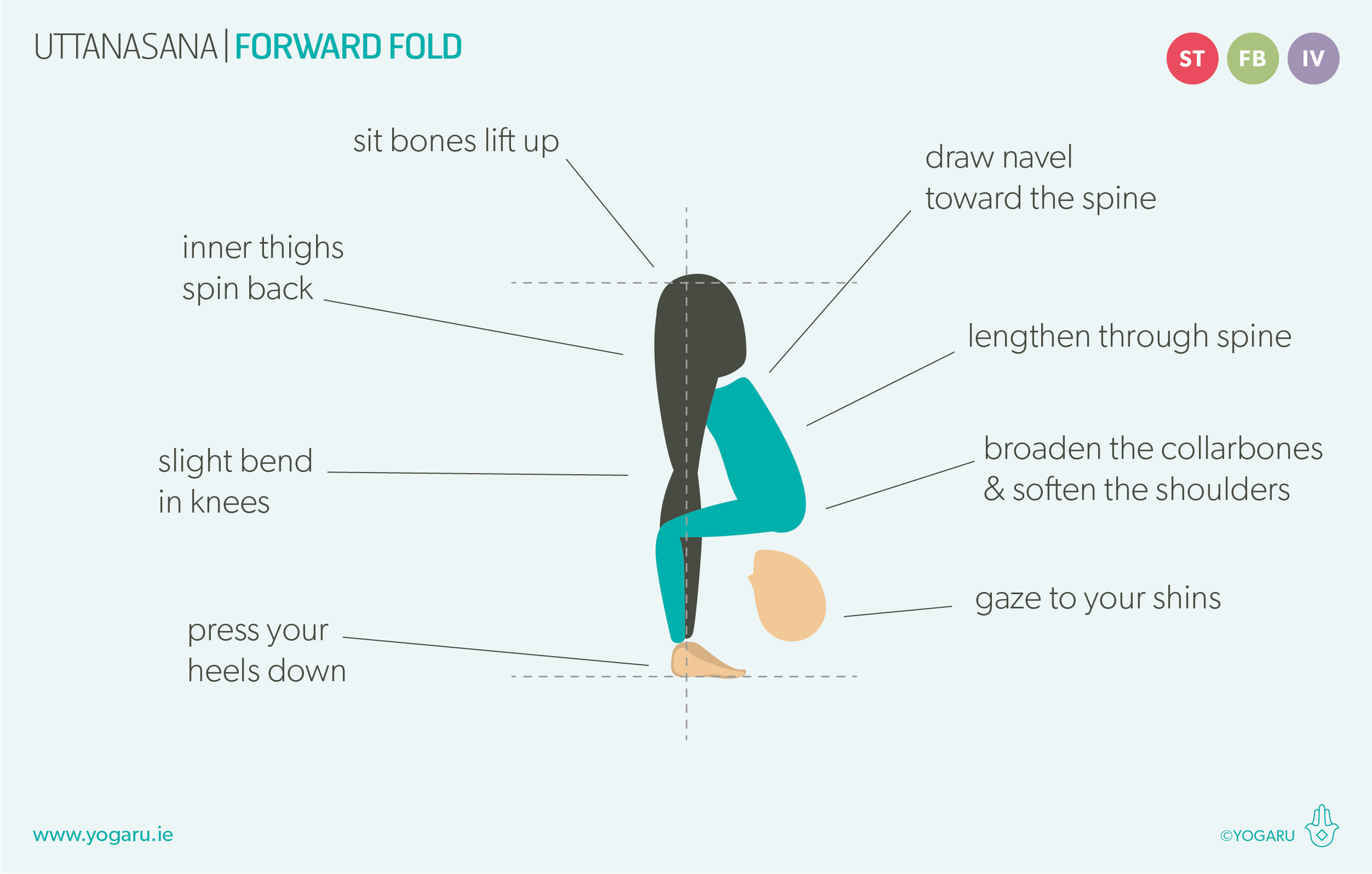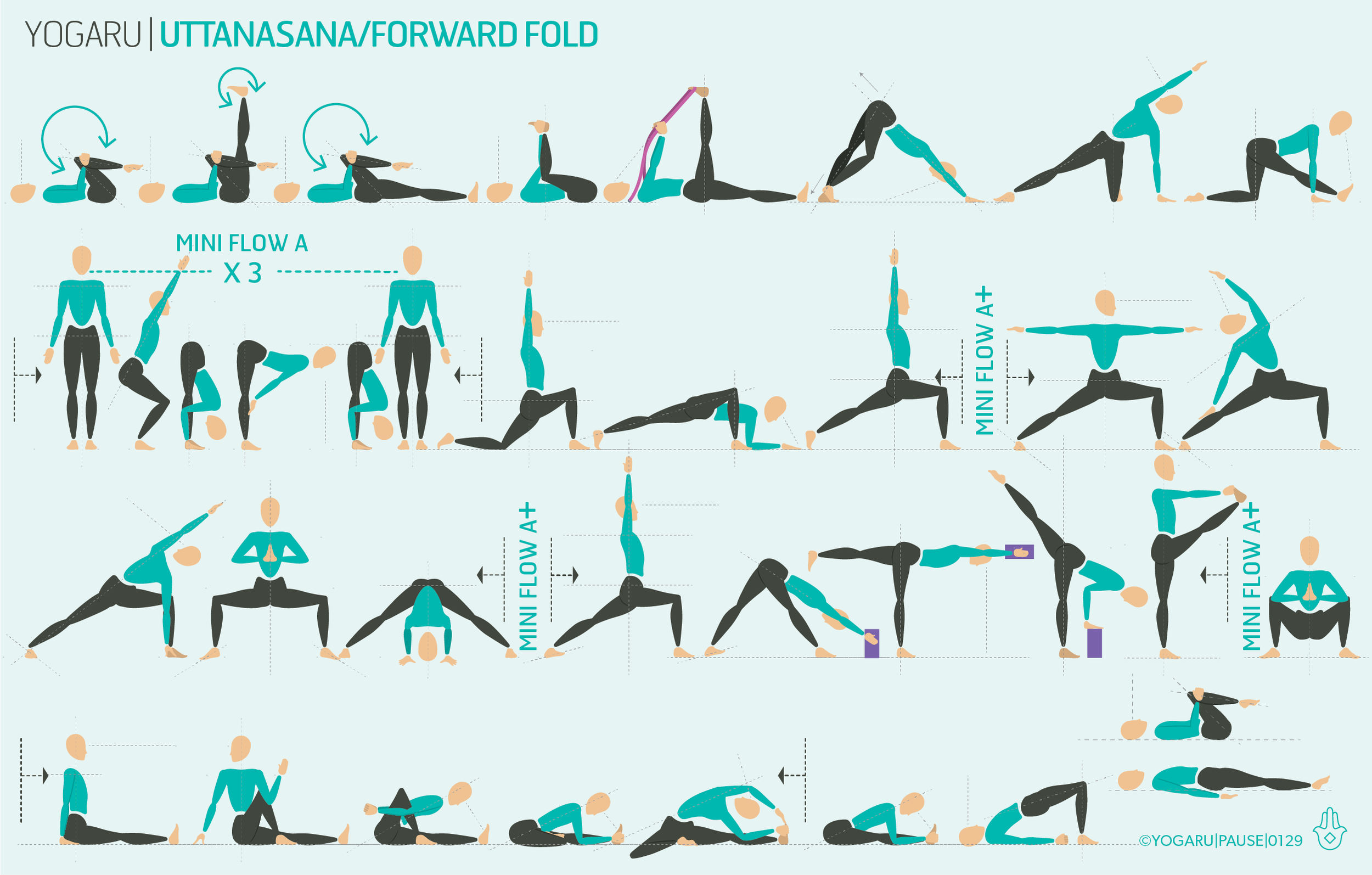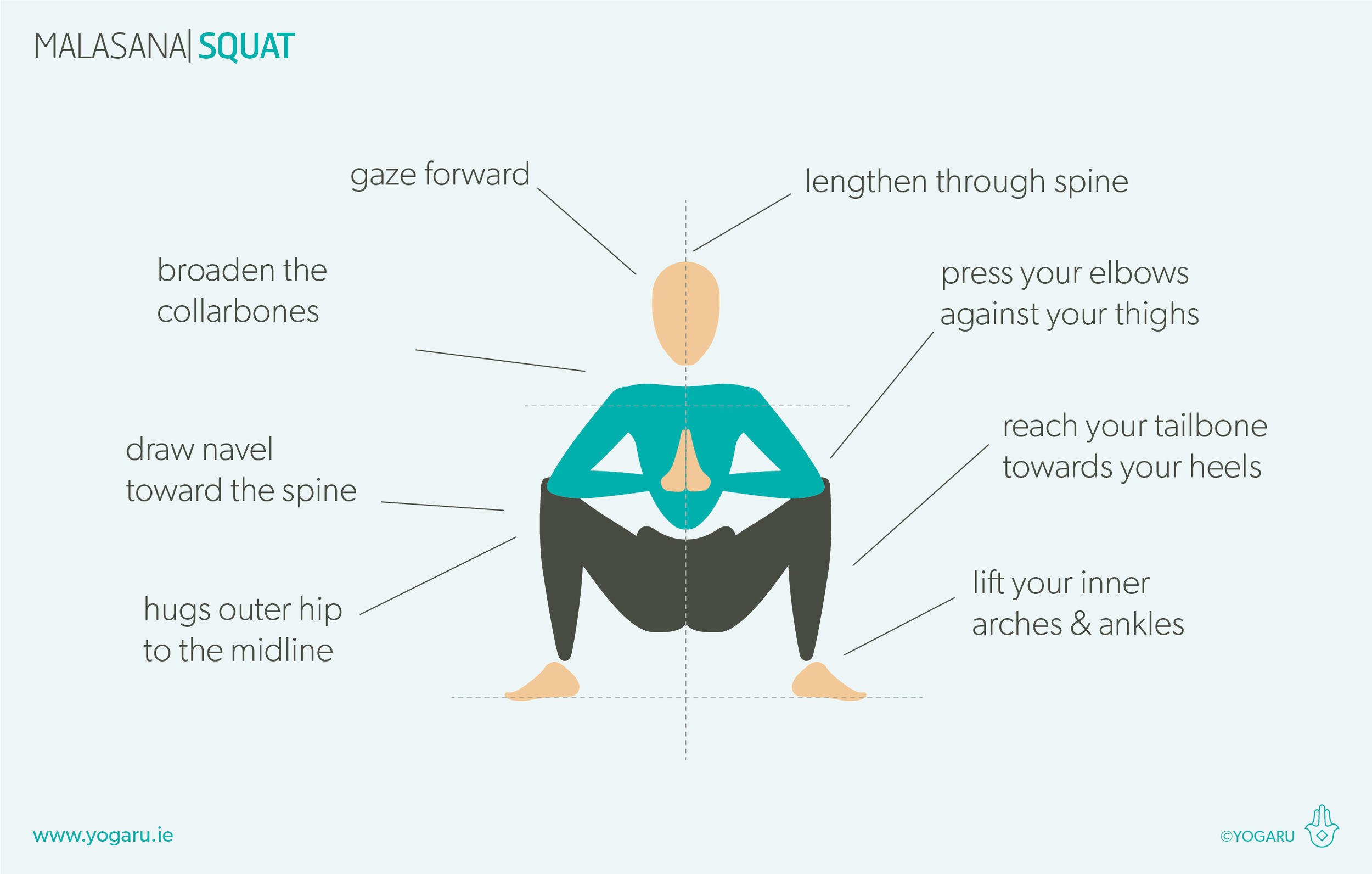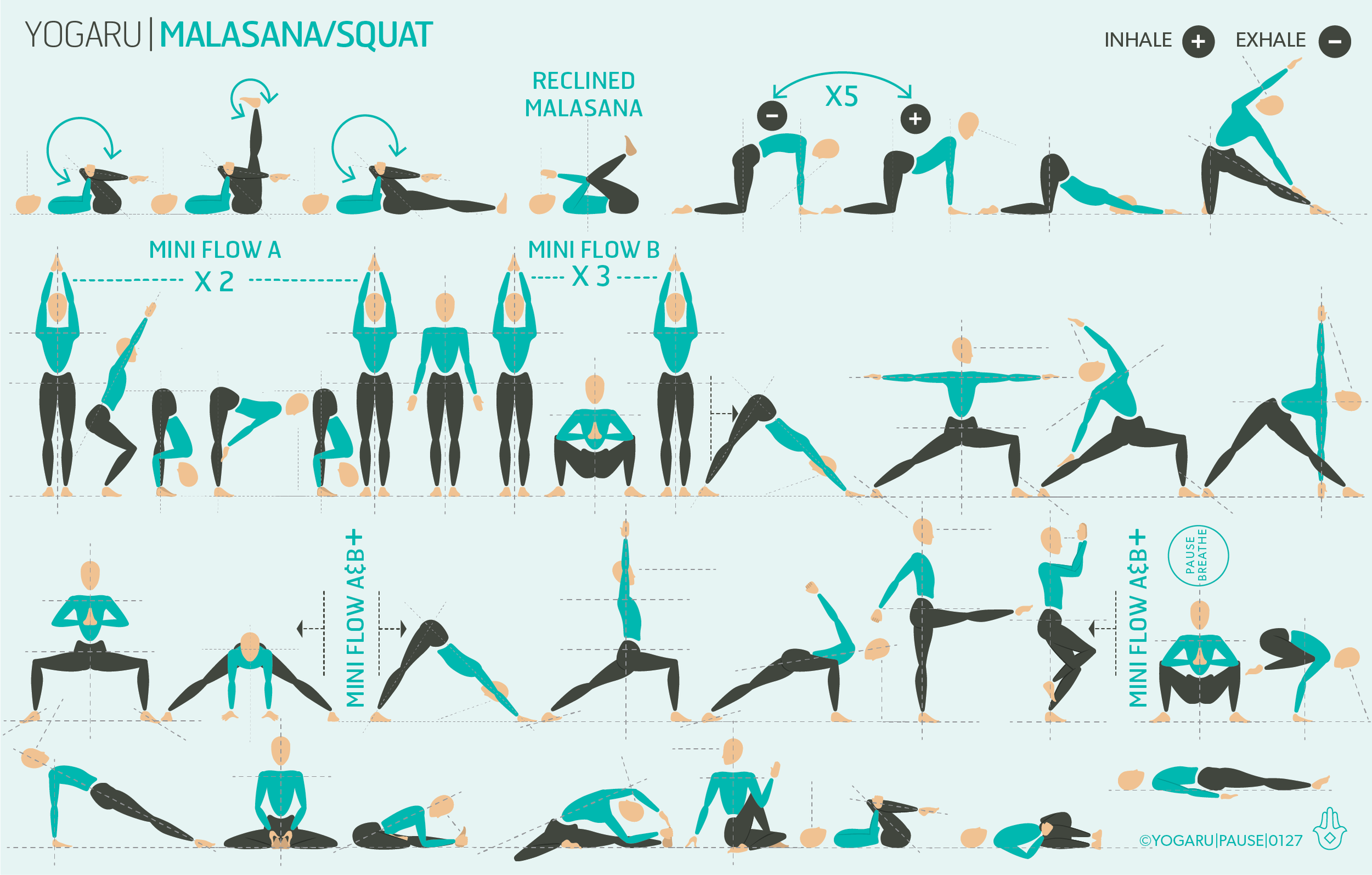SHIFTING YOUR MINDSET
Uttanasana/Forward Fold is a pose I have had a rocky relationship with. As a runner I have tight hamstrings and contrary to popular belief tight does not necessarily mean strong. I am inclined to overstretch the back of my hips if I get caught up in the ego of the pose. One of the keys to staying injury free in this pose is to be patient and to have no expectation of how far forward you think you can fold. Each practice is different, your Uttanasana/Forward Fold in a morning practice will be completely different to an evening practice. Try not to be attached to destinations in your poses, this one in particular. The journey of your practice is the point of yoga, not the picture perfect pose. When you feel sensation in your pose you are getting all the same benefits as the person who seems to effortlessly touch their toes. Stay in your body and with your experience of your practice. Striving and grasping at poses will lead to frustration and injuries.
THE BENEFITS OF UTTANASANA/FORWARD FOLD
Uttanasana/Forward Fold stretches the hamstrings, glutes and spine along the back of the body, and strengthens the hip flexors at the front of the body. Forward bends are a very therapeutic family of poses. They aid digestion, eases constipation and bloating, eases insomnia, eases menstrual & menopause symptoms, eases fatigue, stress, tension and anxiety and boosts the immune system. They also ease headaches and lower blood pressure. In Uttanasana/Forward Fold the head is below the heart which makes it an official inversion pose too, adding extra benefits like increasing circulation, energy and metabolism.
EXPLORING UTTANASANA/FORWARD FOLD IN YOUR PRACTICE
Moving gently between stretching and strengthening is a preferable way to warm the muscles for this pose rather than going straight into a deep forward fold. The hamstrings are the most commonly overstretched muscles in yoga practitioners. They originate at the sit bones on the base of the pelvis, cross over at the back of the thigh, and attach to either side at the top of the shin bone. Their job is to flex the knee and extend the hip. Uttanasana/Forward Fold deeply stretches the hamstrings.
The sooner you establish the difference between the feeling of a muscle stretching, which is a dull, evenly distributed sensation, and a muscle overstretching, which has a pinching sensation, you will be less likely to cause yourself an overstretch injury. It is also important to note that if you are like the majority of people, yogis and non yogis alike, you will not be anywhere near the human sandwich version of this pose you see in books.
Before you fold, lengthen your spine up and lift out of your pelvis to find as much space as possible to tilt forward from. Exhale as you fold forward to lift the organs up out of the lower abdomen and engage your core muscles to support your lower back. When the pelvis can tilt no further, start to pour your upper body over your legs like you are tipping the contents of your head out. If you struggle to get the pelvis to tilt forward try having your feet hip distance apart, rather than the traditional feet together version of the pose. If you have issues with your lower back keep a slight bend in your knees to release the hamstrings and use your hands on your knees to support you as you tilt forward. At your final destination soften what can soften - your shoulders, your arms, your neck, your face. Have a sense of what parts of the body are on duty and what parts can be relaxed.
Before your first Uttanasana/Forward Fold you will have started to open the back of your hips with a supine warm up, Supta Padangusthasana/Reclined Hand to Big Toe and Adho Mukha Svanasana/Downward Facing Dog. The Uttanasana/Forward Fold MINI FLOW A features in full on the first row and then your will repeat it after each standing flow indicated by a ‘MINI FLOW A’ before each subsequent standing flow. You will go through four rounds of the Uttanasana/Forward Fold flow throughout the sequence.
You can also check out my Instagram post on Uttanasana/Forward Fold to add a few different versions of the pose with and without props into this sequence. You will definitely notice a difference between your forward folds at the start and end of your practice as the muscles gradually open up for you.
ALIGNMENT CUES
You will come through three rounds of Uttanasana/Forward Fold. Start gently and have no expectation of how deep you will fold forward. See do you notice any change between the first round of Uttanasana/Forward Fold compared to your final round.
Have a read of the tips below and either print out the sequence or save it onto your device:
From Tadasana, inhale, lengthen up through the spine.
Exhale, slowly fold forward from the hip joint as your pelvis tips forward.
Hands to your shins, to the ground in front of you, or beside your feet.
Press your heels into the ground, lift your sit bones up.
Inhale, lengthen through your spine to the tip of your crown, exhale, fold forward a little more.
Broaden through the collarbones, gaze to your shins.
Subscribe to my newsletter & get a FREE YOGA BENEFITS INFOGRAPHIC as a thank you!
To save the images for personal use click and hold down the image until the ‘save image’ option appears; on Mac hold down ‘control’ and click the image to get the option box; on PC right click on the image to get the option box. Scroll down in the ‘option box’ and click ‘save image’.
Ruth Delahunty Yogaru









